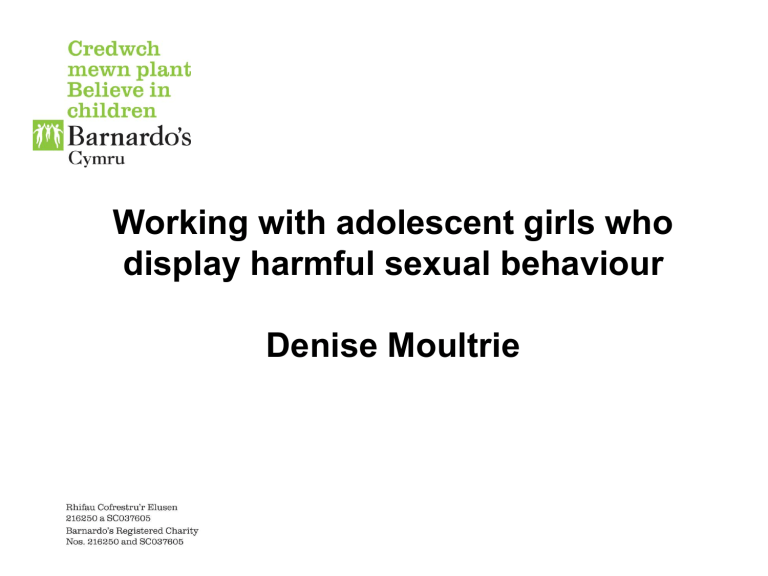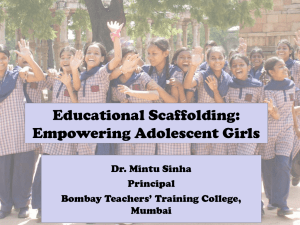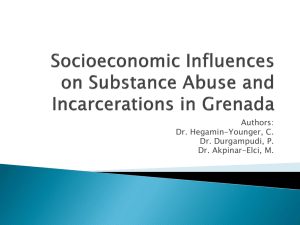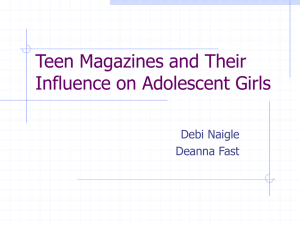Girls with sexually harmful behaviour

Working with adolescent girls who display harmful sexual behaviour
Denise Moultrie
The Taith Service
Established in 2000
Specialist service for children and young people with
Sexually harmful behaviours, (8-21 years)
Dedicated staff team and expert consultancy
Work with circa 120 young people per year
Over 1000 referrals
The Taith Service accepts referrals across Wales
Girls with sexually harmful behaviour
11% referral rate Taith (2011/ 12)
Big Innovation lottery funding 2012-15
Research
Limited research available in regards to assessment of adolescent females – however, growing body in regards to adult females – still small comparisons to adolescent males.
May be due to relatively fewer females reported to display sexually harmful behaviour as compared to males.
Considerable variations regarding the numbers of females who display sexually harmful behaviour – ranging from
5%
(Hislop) 2001 to 40% (Risin & Koss)1987, males who were incarcerated for sexual offences.
Also socio-cultural resistance in acknowledging females as abusive as opposed to caring/ nurturing, or vulnerable victims. May lead to under reporting
Problem definition
Considerable information and models of why men, women and boys sexually assault others
Currently no basic systematic information on girls who sexually harm others
Current interventions with girls based on models of why boys, particularly, commit sexual assaults
What do we think we know about girls and SHB?
Own victimisation may be higher
Trauma, PTSD more prevalent-impact on mental health
Relational development is important
Parental, particularly maternal relationship is key
Exposure to domestic abuse, parental abuse leads to negative beliefs about self/ relationships
Early maturation, risk of increased sexualisation/ exploitation
No one single motivation to offend
ADHD/ conduct problems more likely to be undiagnosed
Relational or other aggressive behaviour present
Typologies
Limited studies regarding typologies of adolescent females who display sexually harmful behaviour - (Matthew et al )
1997 described 3 subtypes.
Those who are acting out their own abuse for other reason other than to gain power/ control.
Those who abuse out of curiosity
Those who are psychosexually/ psychiatrically disturbed – usually high levels of trauma
May also apply to males
One size does not fit all!
Like adult male, adult female and adolescent boys, girls who display SHB are a heterogeneous group
Assessment should be about this girl with good case formulation
Although… there may be some common risk and protective factors
Assessment approach
STATIC RISK
Unchangeable factors in a young person’s life
DYNAMIC RISK
Factors that are changeable over time
80%
70%
60%
50%
40%
30%
20%
10%
0%
Static factors b
Adult information (Beckett) 2006
Adolescent Females
Adult Females
Adolescent Males
females males
35%
30%
25%
20%
15%
10%
5%
0%
Dynamic factors
Adolescent
Fem ale
Adolescent
M ale
Adult Fem ale
40%
35%
30%
25%
20%
15%
10%
5%
0%
Psychometrics
Used with children and young people aged 12+
Sufficient reading and comprehension
Assess factors such as self esteem, emotional loneliness, general empathy, sexual knowledge, victim impact, cognitive distortions
Attitudes towards females, endorsement of violence
Standardised on non offending populations, adolescent males and adult females
40%
30%
20%
10%
0%
80%
70%
60%
50%
Results taken from psychometrics
Adolescent Females
Males
Specific objectives of girls’ project
Develop standardised assessment measures
Develop treatment manual
Evaluation of treatment manual
Increased awareness through training of professionals and publication of project findings
Group task
We need your views!
Group task
What aspects of sex education/ sex and relationships education might girls with sexually harmful behaviour particularly benefit from?
What other areas of health related input might be particularly relevant?
Feedback
Any questions
denise.moultrie@barnardos.org.uk








